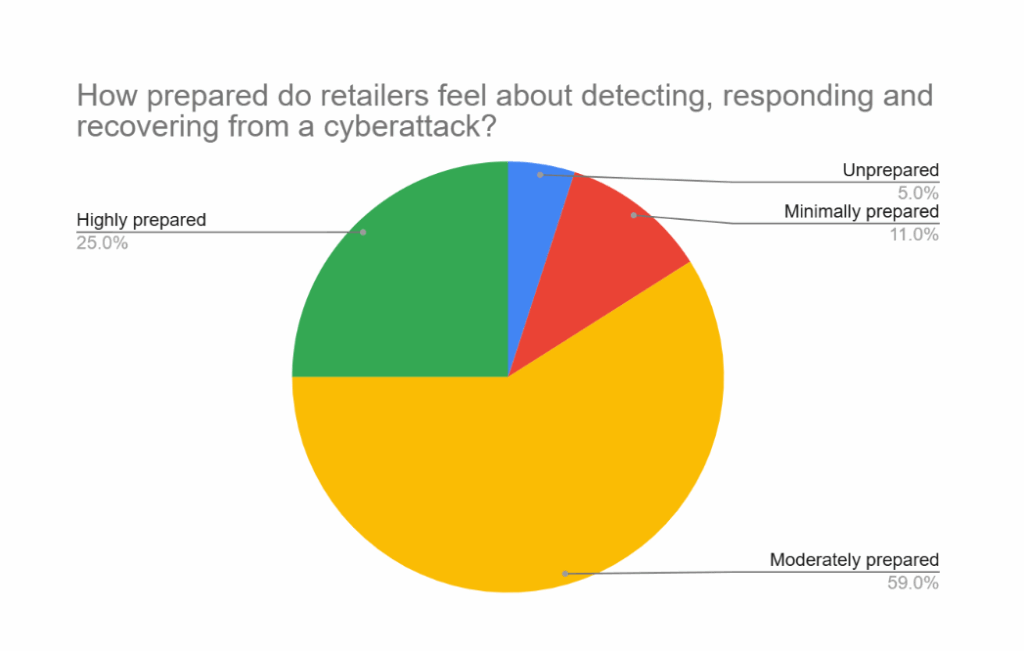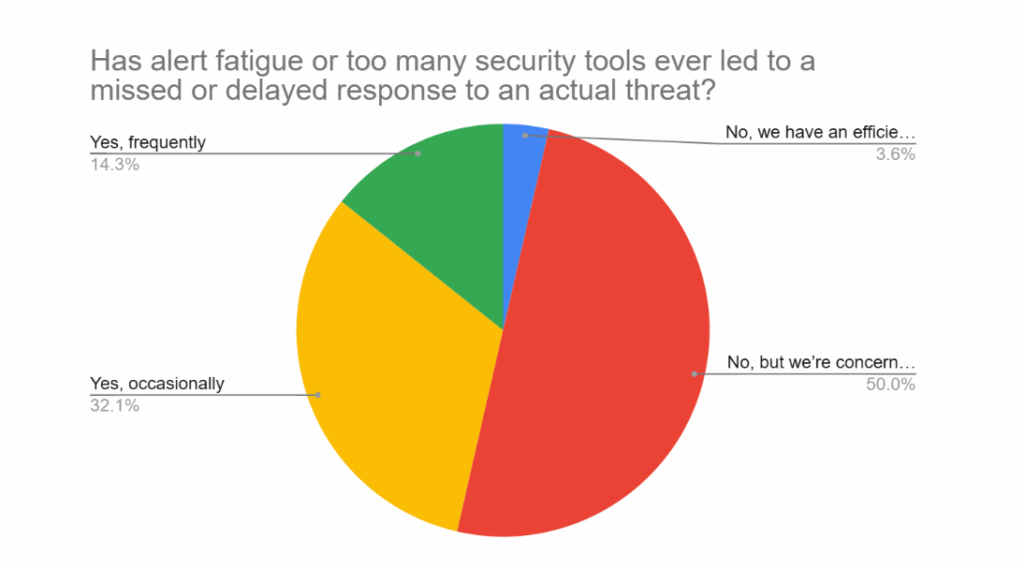Contents:
Cyber attacks on retail surged in 2025, with rising breach costs and increasingly sophisticated threats highlighting the sector’s growing exposure. Explore this 2025 retail cybersecurity statistics rundown to see how these trends are evolving—and how the insights can help strengthen your defenses in 2026.
For cyber criminals, the retail sector makes for a very attractive target. Retail businesses hold vast troves of valuable customer details, payment information and inventory data. What is more, any disruption caused by cyber crime is hugely costly – meaning many brands are tempted to pay ransoms when hackers lock them out of their systems.
And in 2025, we’ve seen a series of major cyber attacks against household name retail businesses. Perhaps the biggest was the breach at UK food and fashion chain Marks & Spencer (M&S). But several other major companies also came under attack, including Auchan and Louis Vuitton in France, Pandora in Denmark and Lovesac in the US.
At Heimdal, we work with numerous retail businesses to keep their data and processes secure. To give them the best service, we are continuously monitoring industry reports, research papers and government updates to identify emerging trends and new threats.
In this article, we’ve selected 2025 retail cybersecurity statistics which illustrate the challenges facing the sector today.
Key retail cybersecurity statistics in 2025
Here are the most important figures to understand cybersecurity in retail in 2025.
- Retail businesses have seen the cost of a breach increase by 17% this year
- Cyber attacks against retail businesses cost $3.54 million on average
- Estimates vary, but between 70% and 80% of retail businesses are reported to have faced cyber attacks in 2025
- Phishing is the top method for attacking retail businesses (65% of attacks involve this technique)
- Between 5% and 6% of all cyber attacks target the retail industry
- The United States’ retail sector is most frequently targeted
- On average, only 33% of retail businesses adopt the most advanced cybersecurity technology
- Only 25% of retail businesses say they feel highly prepared for a cyber attack
Worrying trend: cyber attacks against retail are on the rise
Although retail businesses are still less likely to be attacked than traditional cyber crime targets such as banks, there does appear to have been an uptick in breaches in the sector this year.
According to PureCyber, retail cyber attacks increased 34% in 2025 compared to 2024 figures.
In the UK, the Information Commissioner’s Office (ICO) publishes data on all reported cyber incidents by year and sector. This also shows the upward trend in cyber attacks against the retail sector since 2019 (N.B. I’m writing this article in October 2025, so full data for the year has not been published yet).
The ICO data shows a clear upwards trend, from 751 attacks in 2019, to 1599 in 2021, 2000 attacks in 2023 and 2736 attacks in 2024. And this is just in one country.

Retail not yet a primary target
On the positive side, the retail industry receives fewer attacks than other sectors. Different studies have come to different conclusions, but to give you a picture:
- Data from the Center for International & Security Studies at Maryland in the US suggests that 4.6% of cyber attacks targeted the retail sector in 2025.
- And data published by Statista in May suggests that retail businesses were the target of 6% of all cyber attacks in 2024.
While these figures are positive, there’s no room for complacency. These numbers indicate that about one in 20 attacks target the sector – which is still a significant proportion.
Many retail brands have faced attacks
Different surveys have come to different conclusions, due to varying methodology, respondent types and definitions. However, all of them show that a significant proportion of retail firms have faced attacks. Note that these figures may include unsuccessful attacks.
- VikingCloud reckon that 80% of retailers faced some kind of cyberattack in 2025
- PureCyber estimate that 70% of retail organisations have been hit by at least one attack this year
- But a UK government survey found that only 11% of retail businesses fell victim to cyber crime in 2025 (this discrepancy could be explained by the fact that the UK survey has a much wider participant pool, and includes small and micro businesses)
Consequences of cyber attacks
Facing a cyber attack can be hugely challenging for retail businesses. VikingCloud’s 2025 survey asked retailers about the consequences of an attack:
- 68% said business downtime is the most likely outcome of a cyber attack
- 46% said cyber crimes means they’re forced to shut down digital systems
- 23% of retailers have experienced a drop in stock price when they get breached
- 33% have faced fines for failing to protect customer data
- 53% have experienced reputational damage following a breach
Cost of retail cyber breaches in 2025
It is a little tricky to put a number to the cost of retail cyber breaches. After all, the impact for a cost on a major chain like M&S (~$400m) would be far more than for a small or medium sized business.
However, IBM estimates that, globally, the average cost of cyber breaches against retail businesses in 2025 is $3.54 million (up from $3.48 million in 2024). This is a significant sum of money.
On the other side, impacts for retail businesses are in fact some of the lowest, according to IBM. Industries like healthcare ($7.42m), financial services ($5.56) and energy ($4.83) tend to face much higher costs when they’re breached.
Notable cyber attacks against retail in 2025
There were numerous major cyber attacks in 2025 against retail businesses. Since retail brand names are often much better known than, say, manufacturing or financial services brands, attacks against the sector tend to generate a lot more media attention.
- Marks & Spencer: In April, British food and fashion retailer M&S faced a ransomware attack that was estimated to have cost the firm around £300m ($401m) and disrupted operations for several weeks.
- Other UK retailers: In the same wave of attacks, a number of other UK retailers were also attacked, including Co-op (food), Harrods (department store) and the local subsidiary of sportswear brand Adidas.
- Lovesac: US furniture chain Lovesac fell victim to a ransomware attack in February 2025, which took three days to remediate.
- Luxury brands: Throughout the year, a number of luxury fashion brands faced major cyber attacks, including the Kering conglomerate in September (home to Gucci and Balenciaga), LVMH and Chanel in July and Cartier in June.
- The North Face: The American outdoor fashion label fell victim to a credential stuffing attack in June 2025.
- Pandora: Danish jewellery giant Pandora became victim to a cyber attack in August, due to a weakness in a third party platform.
- Auchan: The French supermarket chain suffered a breach in August targeting its customer loyalty programme, exposing hundreds of thousands of people’s names, home addresses and email addresses.
Methods cyber criminals use to attack retail businesses
Cyber criminals used a wide range of methods to attack retail businesses in 2025, and many breaches involve multiple stages and techniques. According to PureCyber:
- 65% of breaches included a phishing element
- 55% involved compromised employee credentials
- 40% of attacks targeted point of sale systems
- 60% of breaches originated in vulnerabilities in third party vendors or service providers (the attacks against M&S were a clear example of this)
- 44% of breaches had a ransomware element
Varying attitudes and approaches to cyber crime in retail
Cyber attacks against the retail sector are clearly on the rise in 2025. So, how is the sector responding?
Retailers appear fairly confident about the cyber threat
According to a 2025 survey by Barclays Bank, retailers generally seem fairly confident about how well they could weather a cyber attack. A quarter see themselves as highly prepared (up from 22% in 2024), while almost 60% say they’re moderately prepared.

But retailers may have underestimated the threat
Data from the UK government survey found that 44% of retailers see cyber attacks as a low priority, compared to 27% of businesses overall. And only 22% of retail firms had someone on the board who was responsible for cybersecurity, compared to 57% of finance and 52% of information/communications businesses.
Given the impact, scale and spread of attacks against retail businesses this year, this attitude does appear relatively complacent.
That being said, the Barclay’s survey found that 58% of retailers say cyber resilience is a top priority.
Small retail businesses are least secure
A Eurobarometer survey found that small retail businesses in Europe are less prepared when it comes to protecting themselves against cyber attacks. On average, only 33% of small and medium-sized enterprises (SMEs) and startups in the retail sector were using advanced cybersecurity technologies, compared to 43% of large businesses. What is more, a third of SMEs in the retail sector haven’t adopted any advanced cybersecurity tools.
Related: Small business cybersecurity statistics for 2025
Limited resources is top obstacle to better security
As with many industries, limited access to internal IT resources is the top challenge for retailers when it comes to protecting themselves against cyber attacks. According to VikingCloud, 52% say this is the number one challenge to bolstering their cyber defences.
Alert fatigue an issue for retail-focused MSPs
In our recent survey with US managed service providers, we received responses from 24 MSPs who work primarily with retail sector clients.
These respondents told us that agent fatigue from having too many cybersecurity tools was a significant issue. What is more, almost half either frequently or occasionally missed actual threats because they received too many alerts.

Retail businesses need to shop around for better security
As these 2025 retail cybersecurity breach statistics show, there is a clear trend towards more cyber attacks against the sector. It is therefore essential that all retailers – from small independents up to multinational brands – bolster their defences.
At Heimdal, we offer a powerful platform of cyber security solutions that can be extended and tailored to your needs. We offer solutions for everything from firewalls, to patch management, to phishing protection or AI monitoring of third party apps you use – and much more.
Contact us today to learn about our comprehensive cybersecurity platform. Or read about our work with retail brands like Waterstones, Jysk and Kaufmann.
If you liked this article, follow us on LinkedIn, Reddit, X, Facebook, and Youtube.










 Network Security
Network Security
 Vulnerability Management
Vulnerability Management
 Privileged Access Management
Privileged Access Management  Endpoint Security
Endpoint Security
 Threat Hunting
Threat Hunting
 Unified Endpoint Management
Unified Endpoint Management
 Email & Collaboration Security
Email & Collaboration Security








